The Jordan River
The Jordan River is located in the Middle East, stretching down from the Sea of Galilee all the way to the Dead Sea. Shared by Israel, Jordan and the Palestinian Authority, it lies in a structural depression and has the lowest elevation of any river in the world. Beginning at the Syria-Lebanese border, where the Banias River of Syria and the Hasbani River of Lebanon meet, it begins its journey flowing south to Mount Hermon.
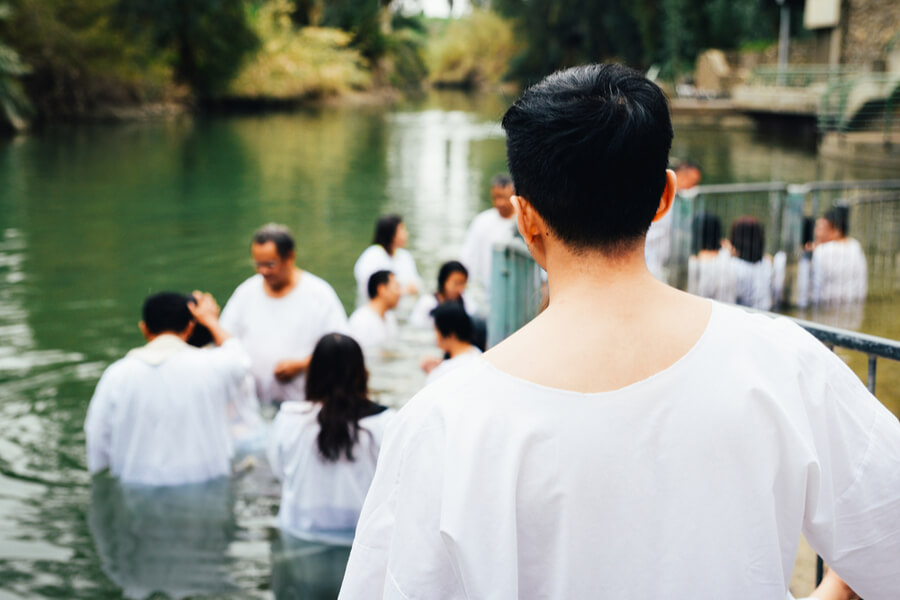
Yardenit baptismal site, the Jordan River, Israel. Photo credit: © Shutterstock
From the peaks of Mount Hermon in the Golan Heights (Israel’s most northern point), it forms subterranean waterways which turn into springs, continuing on down into the fertile Hula Valley. There, it turns into one river - the Jordan - arriving at the Sea of Galilee (the ‘Kinneret’ in Hebrew) before winding its way down to the Dead Sea, where it empties.
The etymology of the Jordan River
The Jordan River (or River Jordan) is known in Hebrew as ‘Nahar ha Yarden’ and in Arabic as ‘Nahr Al Sharieat’. There are several theories as to the origin of its name. One is that it is related to the Egyptian word ‘ ye or’ (meaning ‘big river’). Another is that it hails from the Semitic ‘ Yard-on’ (meaning ‘flow down’). It’s also the case that ‘den’ may be linked to the Akkadian word ‘dannum’ (which means powerful).
The first historical evidence of the name is when it appears as ‘Yardon’ on Egyptian papyrus, dating back to the time of Ramses II. Arabic writings at that time also refer to the river as ‘ Al-Urdunn. After the Crusader era, locals began referring to it using the Arabic term ‘Nahr Al Sharieat’ (‘the watering place’) and this was actually recorded by geographers in medieval times.
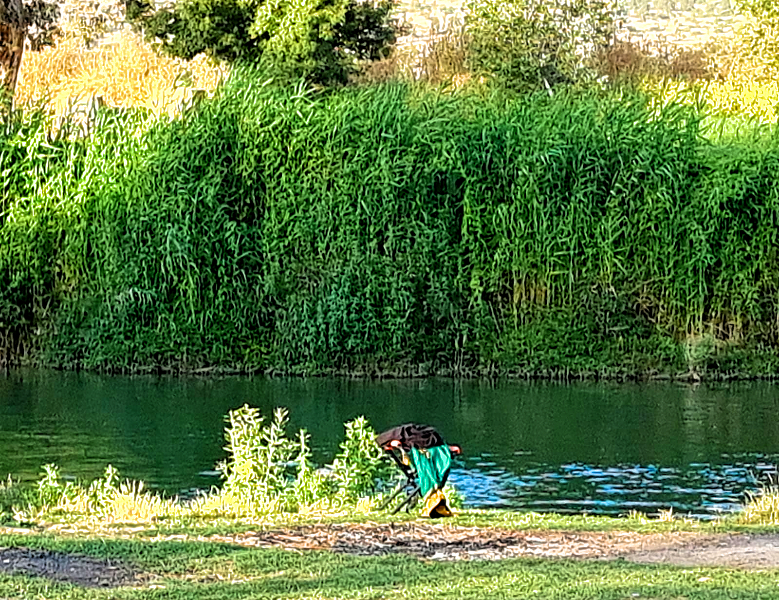
Shores of the Jordan River, Galilee. Photo credit: © Jenny Ehrlich
History of the Jordan River
In the 19th century, the Jordan River was explored by boat by men such as Christopher Costigan, Thomas Molyneux, and William Francis Lynch. Mark Twain visited the Jordan River as part of his trip to the Holy Land in 1867 and commented: “It is only 90 miles long and so crooked that a man does not know which side of it he is on half the time. In going 90 miles, it does not get more than 50 miles of ground. It is not any wider than Broadway in New York.”
After the War of Independence and the creation of the State of Israel, in 1948, the Jordan river marked the border between Israel and Jordan, from the southern part of the Sea of Galilee down to where the Yabis River flows into it. However, after the Six-Day War, in 1967, when Israel conquered the West Bank, the Jordan River began serving as the ceasefire line as far south as the Dead Sea.
Geography of the Jordan River
The Jordan River is more than 360 km (223 miles) long but because it winds and twists, the actual distance between its primary source and the Dead Sea is less than 200 km (124 miles). It is part of the East African Rift Valley, which runs from Turkey, via the Red Sea, into eastern Africa. The valley is narrow and long and lies lower than the surrounding landscape - in some parts, the land can be 900 meters higher than the river.
In places, it resembles more of a creek than a river - less than 2 meters deep and 10 meters wide. The walls of the valley can be bare and steep but are broken by gorges of water. By the time it arrives at the Dead Sea, it is at the lowest elevation of any river in the world - almost 420 meters below sea level. Have a look at the Jordan River map to get a better idea.
The Jordan River at Yardenit, Israel. Photo credit: © Dmitry Mishin
Importance of the Jordan River as a Water Source
Until the first decade of the 21st century, the waters of the Jordan River had been the largest water resource for Israel; lately, desalinated seawater from the Mediterranean Sea has taken over this role. Israel's National Water Carrier, completed in 1964, has delivered water from the Sea of Galilee to the Israeli coastal plain for over four decades until prolonged drought led to abandoning this solution in favor of desalination.
Until the beginning of the 21st century, the waters from the Jordan were essential for Israel. However, in more recent years, and with the advent of technology, desalination projects mean that the majority of Israel’s drinking water is now recycled from sewage plants. By 1964, Israel had been diverting water from the Sea of Galilee to a National Water Carrier, using a pump. In the same year, Jordan built a channel diverting water from the Yarmouk (a tributary) to the East Ghor Canal. Syria also has reservoirs to channel water from this tributary.
As the years go past, more of the Jordan river's waters are being used for manmade purposes - around 70% to 90%. This, of course, is having a detrimental effect on river flow and the ecology of the area.
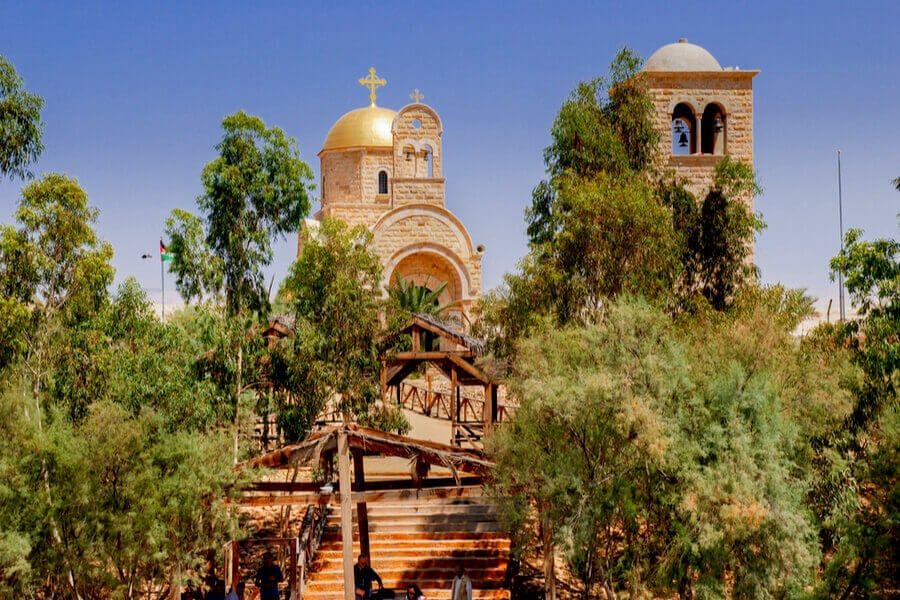
Qasr Al-Yahud Church on the shores of the Jordan River. Photo credit: © Shutterstock
Religious Significance of the Jordan River
Mentions of the Jordan River in the Bible are many - in fact, it is mentioned more than 185 times. This is not surprising since the Jordan River is revered both by Jews and Christians. In the Hebrew Bible, the river is first mentioned in Genesis, when Jacob crossed it with just a staff, before receiving the blessing of God. In Exodus, Joshua led the Israelites across the Jordan River into the Promised Land, before conquering Jericho. Crossing the Jordan, for them, was a step towards freedom, the waters representing liberation from oppression.
The Jordan River is also mentioned in the context of different battles, led by Gideon and Saul. The prophets Elisha and Elijah were both associated with the river (Kings I and II) - Elisha told a man to bathe there to rid himself of leprosy and Elijah lived near the Jordan for some time. Moreover, both of them are purported to have crossed the Jordan river, miraculously.
In the Christan Bible, the Jordan River was the location that set the scene for the ministry of Jesus Christ. John the Baptist preached there regularly and baptized those who asked for repentance. Indeed, for Christians, It was at the Jordan where God proclaimed his love for Jesus and the Spirit.
According to the Gospel of Matthew, Jesus himself came to the river to be baptized, not to ask for repentance but to ‘fulfill all righteousness’ In the Gospel of Luke, there is a recounting of the Holy Spirit descending upon Jesus immediately after his baptism. At the same time, Luke tells of a voice that came from Heaven addressing Jesus with the words: "This is my beloved Son, in whom I am well pleased." After the Church of the Nativity in Bethlehem and the Church of the Holy Sepulchre in Jerusalem, the Jordan River is perhaps the most sacred spot in Israel for Christians to visit today.
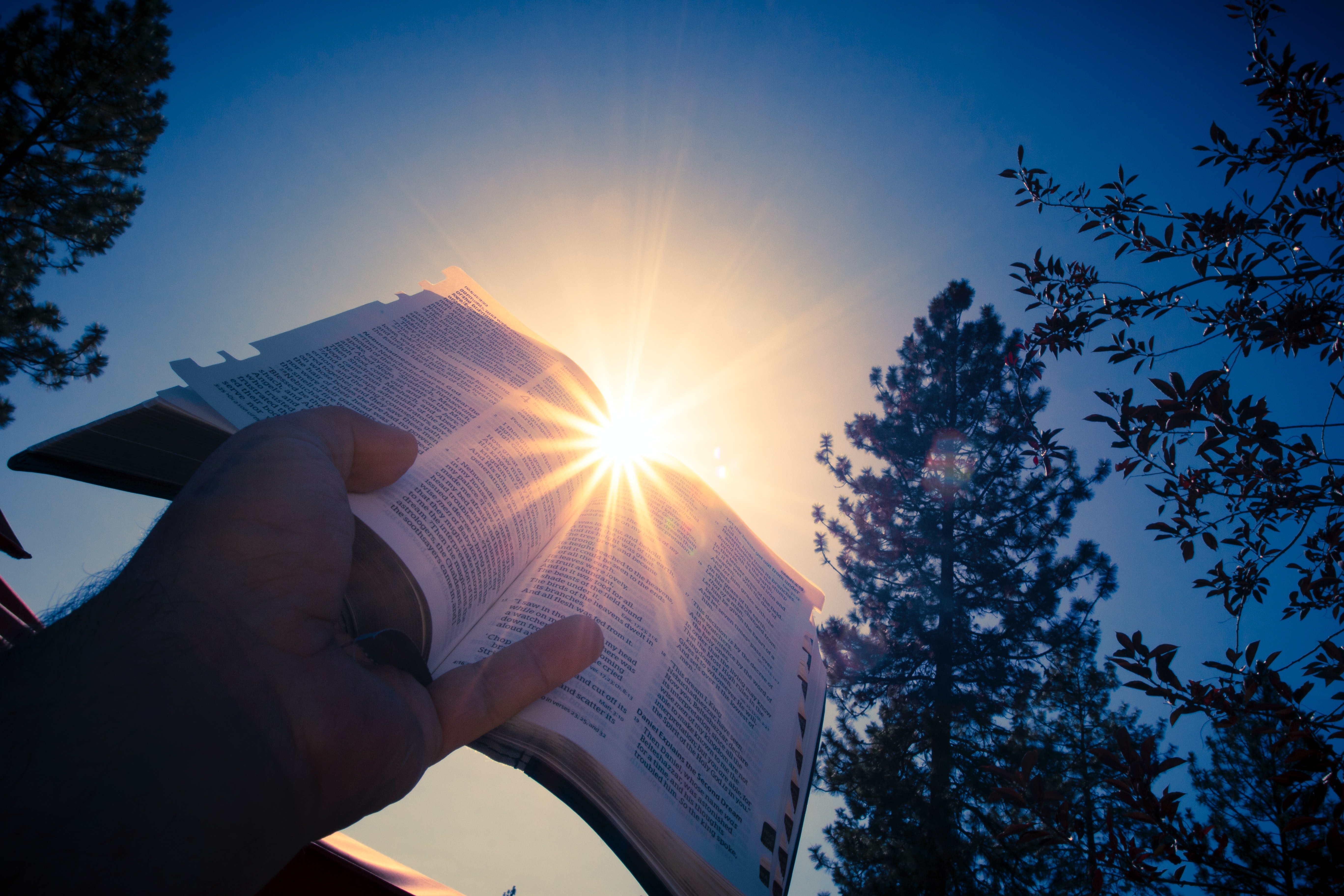
The person holding the Bible. Photo by Timothy Eberly on Unsplash
Israel’s Two Baptismal SitesThere are two different baptismal sites in Israel, to which thousands of pilgrims flock each year, either as visitors/spectators or as participants in an actual Jordan River baptism. The first - Qasr al-Yahud - is situated close to Jericho, which can easily be combined with trips both to Jerusalem and the Dead Sea. The second - Yardenit - is up in the north of Israel, in Galilee.
Qasr al-Yahud Baptismal Site
Christians believe that this was the spot where Jesus was baptized by John the Baptist, at a spot on the east bank of the river named Bethany Beyond the Jordan. It is said that John lived here and where Jesus sought refuge after being threatened with his life in Jerusalem.
Tradition also has that it is the spot where the Israelites (led by Joshua) crossed into the Promised Land, after their exodus from Egypt. Around 300 years later, the prophet Elijah crossed the same river, but in the opposite direction. According to his disciple Elisha, he then ascended heaven in fiery chariots.
Qasr al-Yahud fell under Jordanian control after the War of Independence therefore visitors to Israel could not access it. Between 1967 and 1884, it was still almost impossible to visit, since it lay in a ‘no man’s land’ surrounded by landmines and barbed wire. Today, it is possible to be baptized in these waters and the site is particularly popular with Greek Orthodox, Franciscan, Coptic, Russian Orthodox, Ethiopian and Syriac pilgrims - particularly at Easter and Epiphany.
However, facilities are somewhat limited - here are some benches at which people can eat (visitors will need to bring their own food) and take shelter. There are also changing rooms, but pilgrims will need to bring their own robes. There are also several chapels, churches, and monasteries south of the site. Entry to Qasr al-Yahud is free.
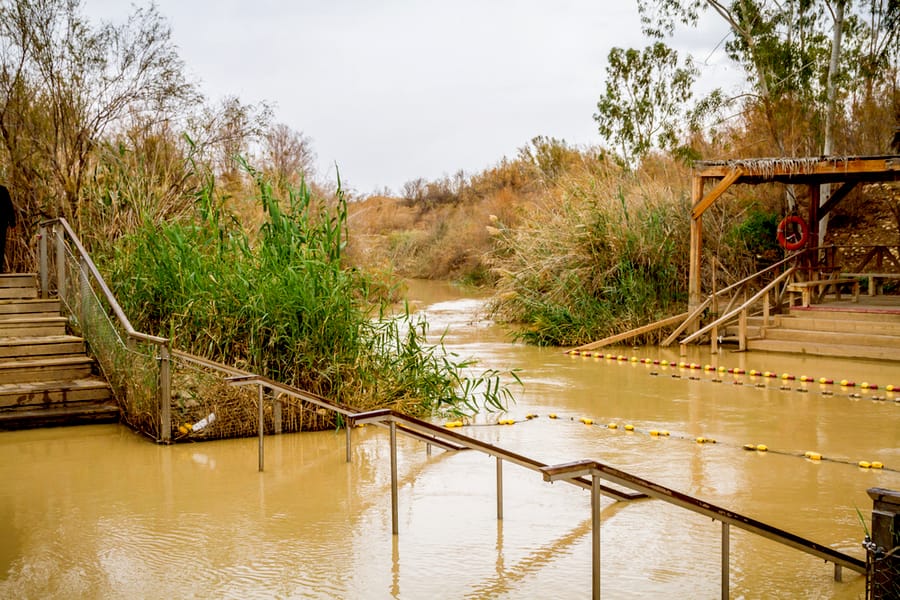
The Jordan River at Qasr al-Yahud Baptismal Site. Photo credit: © Shutterstock
Yardenit Baptismal Site
Situated on the banks of the river Jordan, on the southern shores of Galilee, Yardenit is a beautiful tranquil setting and each year welcomes over half a million tourists and pilgrims. This is the place where Jesus spent much of his life ministering, therefore it is infused with spiritual and religious significance, and visiting here is always a very moving experience for Christians.
Yardenit was built by the Israeli government as an alternative pilgrimage site to Qasr al-Yahud since for long periods of time the former site was inaccessible. Arriving at Yardenit, visitors will see an account of Jesus’ baptism, as recounted by the Gospel of Mark. This is written on the ‘Wall of Life’ in 80 different languages. The grounds themselves are green and scenic, and the riverbanks teem with wildlife.
There are quiet areas for contemplation and prayer and baptisms take place throughout the day, which visitors are welcome to watch. White baptismal robes are available for purchase and there is also a restaurant and well-stocked gift shop. Entry to Yardenit is free. To visit Yardenit and Qasr al-Yahud, feel free to book our Nazareth and Galilee tour and Jericho, the Dead Sea, and the Jordan River Tour.
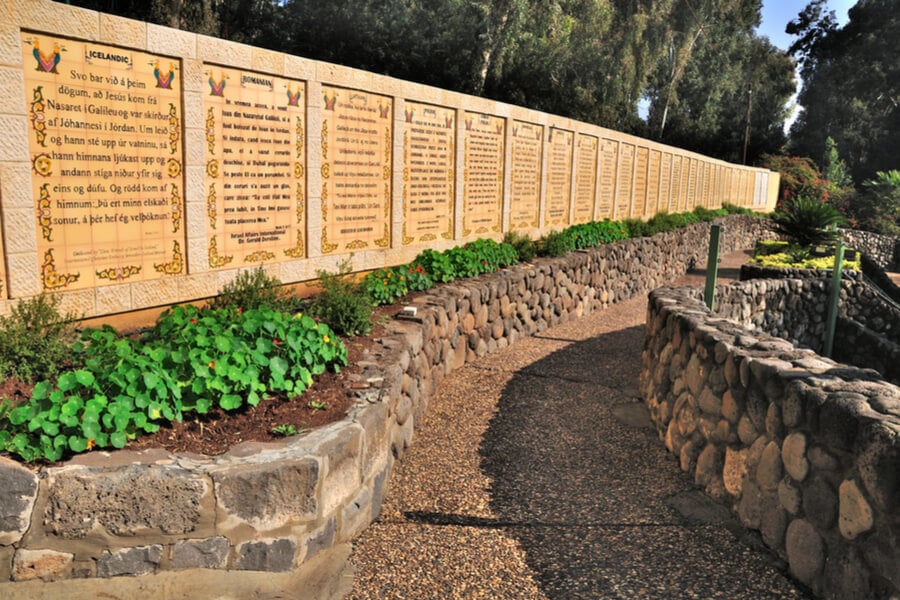
Wall of Life at Yardenit Baptismal Site. Photo credit: © Shutterstock
 Login / Register
Login / Register
 Contact Us
Contact Us
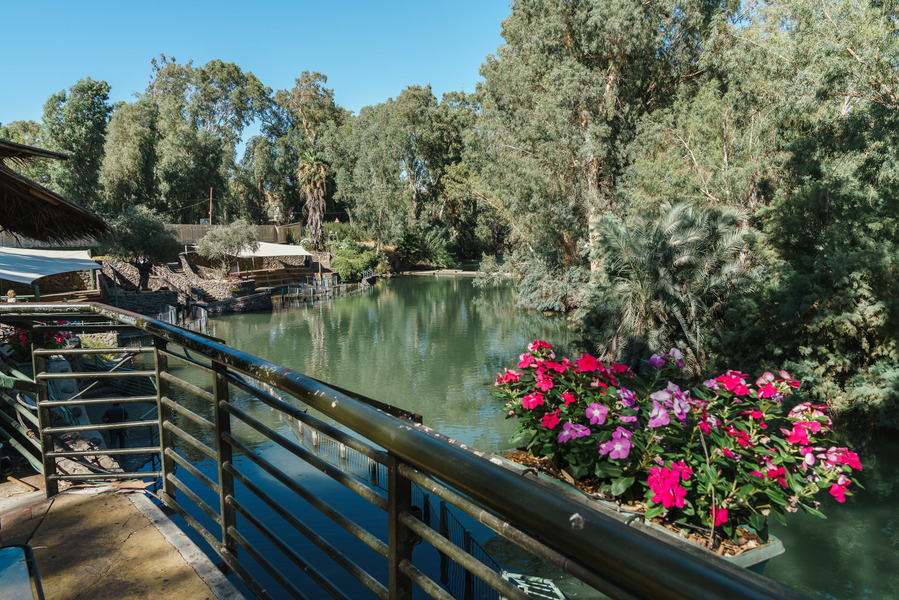
 Certificate of Excellence
Certificate of Excellence Guaranteed Departure
Guaranteed Departure Low Prices Guaranteed
Low Prices Guaranteed 24/7 Support
24/7 Support




